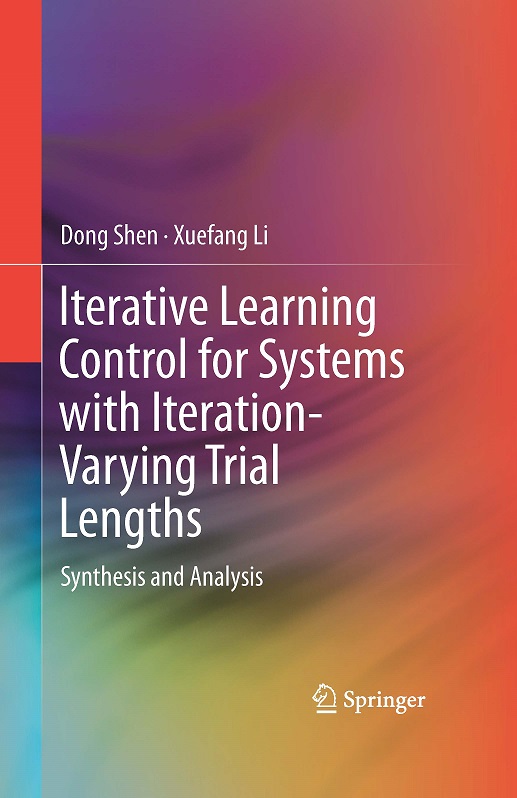Preface
1 Introduction
1.1 Iterative Learning Control
1.2 Basic Formulation of ILC
1.2.1 Discrete-Time Case
1.2.2 Continuous-Time Case
1.3 ILC for Systems with Varying Trial Lengths
1.4 Structure of this Monograph
1.5 Summary
References
Part I Linear Systems
2 Averaging Techniques for Linear Discrete-Time Systems
2.1 Problem Formulation
2.2 ILC Design and Convergence Analysis
2.3 Extension to Time-Varying Systems
2.4 Illustrative Simulations
2.5 Summary
References
3 Averaging and Lifting Techniques for Linear Discrete-Time Systems
3.1 Problem Formulation
3.2 ILC Design and Convergence Analysis
3.3 Extension to Time-Varying Systems
3.4 Illustrative Simulations
3.5 Summary
References
4 Moving Averaging Techniques for Linear Discrete-Time Systems
4.1 Problem Formulation
4.2 Controller Design I and Convergence Analysis
4.3 Controller Design II and Convergence Analysis
4.4 Illustrative Simulations
4.4.1 Simulations for ILC Law (I)
4.4.2 Simulations for ILC Law (II)
4.5 Summary
References
5 Switching System Techniques for Linear Discrete-Time Systems
5.1 Problem Formulation
5.2 ILC Design
5.3 Strong Convergence Properties
5.4 Illustrative Simulations
5.5 Summary
References
6 Two-Dimensional Techniques for Linear Discrete-Time Systems
6.1 Problem Formulation
6.2 Learning Gain Matrix Design
6.3 Convergence Analysis
6.4 Alternative Scheme with Distribution Estimation
6.5 Illustrative Simulations
6.6 Summary
References
Part II Nonlinear Systems
7 Moving Averaging Techniques for Nonlinear Continuous-Time Systems
7.1 Problem Formulation
7.2 ILC Design and Convergence Analysis
7.3 Extension to Non-affine Nonlinear Systems
7.4 Illustrative Simulations
7.5 Summary
References
8 Modified Lambda-Norm Techniques for Nonlinear Discrete-Time Systems
8.1 Problem Formulation
8.2 ILC Design
8.3 Convergence Analysis
8.4 Illustrative Simulations
8.5 Summary
References
9 Sampled-Data Control for Nonlinear Continuous-Time Systems
9.1 Problem Formulation
9.2 Sampled-Data ILC Design and Convergence Analysis
9.2.1 Generic PD-type ILC Scheme
9.2.2 The Modified ILC Scheme
9.3 Sampled-Data ILC Design with Initial Value Fluctuation
9.3.1 Generic PD-type ILC Scheme
9.3.2 The Modified ILC Scheme
9.4 Illustrative Simulations
9.4.1 Generic PD-type ILC Scheme
9.4.2 The Modified ILC Scheme
9.5 Summary
References
10 CEF Techniques for Parameterized Nonlinear Continuous-Time Systems
10.1 Problem Formulation
10.2 ILC Algorithm and Its Convergence
10.3 Effect of Random Trial Lengths and Parameters
10.4 Extensions and Discussions
10.4.1 Unknown Lower Bound of the Input Gain
10.4.2 Iteration-Varying Tracking References
10.4.3 High-Order Systems
10.4.4 Multi-input-Multi-output Systems
10.4.5 Parametric Systems with Nonparametric
Uncertainty
10.5 Illustrative Simulations
10.6 Summary
References
11 CEF Techniques for Nonparameterized Nonlinear Continuous-Time Systems
11.1 Problem Formulation
11.2 Robust ILC Algorithms and Their Convergence Analysis
11.2.1 Norm-Bounded Uncertainty Case
11.2.2 Variation-Norm-Bounded Uncertainty Case
11.2.3 Norm-Bounded Uncertainty with Unknown
Coefficient Case
11.3 Extension to MIMO System
11.3.1 Norm-Bounded Uncertainty Case
11.3.2 Variation-Norm-Bounded Uncertainty Case
11.4 Illustrative Simulations
11.5 Summary
References
12 CEF Techniques for Uncertain Systems with Partial Structure
Information
12.1 Problem Formulation
12.2 Time-Invariant and Time-Varying Mixing Scheme
12.3 Differential-Difference Hybrid Scheme
12.4 Illustrative Simulations
12.5 Summary
References
Index


